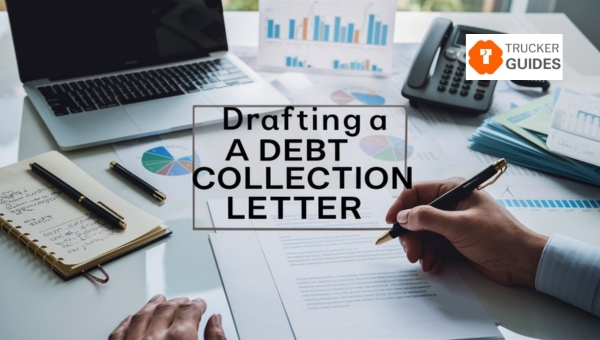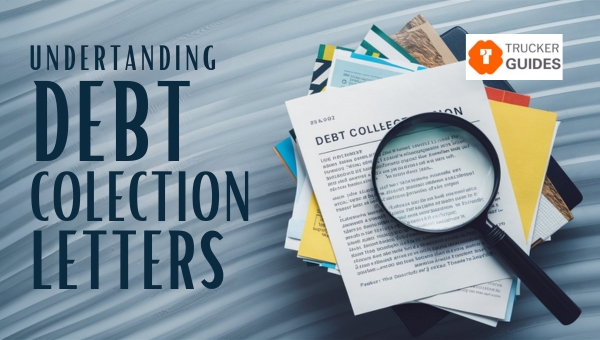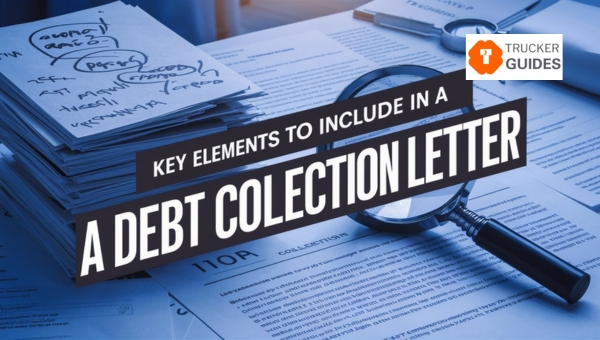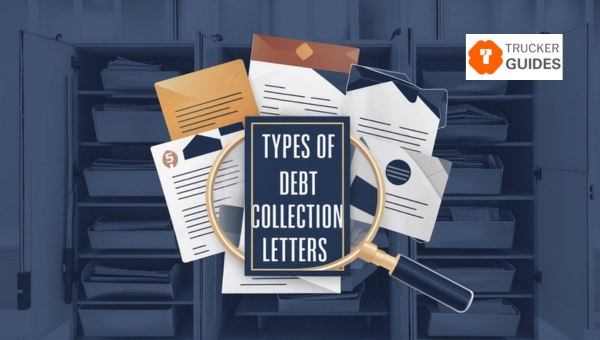Debt collection can be challenging, but it doesn’t have to be. In this article, I will guide you through the essentials of Drafting a Debt Collection Letter. From understanding the purpose and key elements to knowing when to hire a collection agency.
You’ll gain valuable insights to make the process smoother. Let’s dive in and make debt collection less daunting.
What Is Debt Collection Letters?
Debt collection can seem daunting, but it’s crucial for both businesses and individuals. By understanding the importance and purpose of these letters, you can handle financial obligations more effectively.
Let’s dive into why debt collection letters matter and what they aim to achieve.
Importance of Debt Collection Letters
Debt collection letters play a vital role in financial transactions. They act as a formal reminder to the debtor about their outstanding dues and help maintain a professional relationship. Here are some key reasons why these letters are important:
- Legal Documentation: These letters provide a written record of attempts to collect the debt, which can be essential if legal action becomes necessary.
- Encouragement for Payment: They serve as a prompt for the debtor to take the necessary steps towards payment, often leading to quicker resolutions.
- Professional Communication: Sending a formal letter shows that the creditor is serious about the debt, which can motivate the debtor to respond more promptly.
- Clarity and Transparency: They clearly outline the amount owed, due dates, and any potential consequences, ensuring there’s no ambiguity.
Purpose of Debt Collection Letters
The primary purpose of a debt collection letter is to recover outstanding debts. However, they serve several other functions as well. Here’s a comprehensive look at what these letters aim to achieve:
- Informing the Debtor: They inform the debtor of the specific details of the debt, including the amount owed, the original creditor, and the due date.
- Request for Payment: The main goal is to request payment from the debtor, outlining how and when the payment should be made.
- Legal Notification: They notify the debtor of any legal actions that may be taken if the debt remains unpaid, providing a sense of urgency.
- Maintaining Records: These letters help maintain a clear record of all communications related to the debt, which can be useful for both parties.
- Offering Solutions: Sometimes, these letters also propose solutions or payment plans to help the debtor manage their financial obligations more easily.
- Professionalism: They reflect the professionalism of the creditor, which can help in maintaining a positive relationship with the debtor even in difficult financial situations.
Also Read: Best 25 Ways to Collect Business Debt Fast and Easy
Key Elements to Include in a Debt Collection Letter
When drafting a debt collection letter, it’s essential to cover specific key elements to ensure clarity and effectiveness.
This section will delve into various components that every debt collection letter should contain detailed information about the debt, clear instructions for payment, legal consequences of non-payment, and maintaining a professional tone and language.
Providing detailed information about the debt is crucial for the recipient to understand the context and specifics of the owed amount. Here are the elements you should include:
- Amount Owed: Clearly state the total amount the debtor owes.
- Due Date: Mention the original due date of the debt.
- Description of Debt: Provide a brief description of the nature of the debt (e.g., unpaid invoice, loan amount).
- Reference Number: Include an account or reference number associated with the debt for easy tracking.
- Creditor’s Information: Clearly state the name and contact information of the creditor.
Including these details ensures that there is no ambiguity about what the debt pertains to and helps the debtor to verify the information.
Clear Instructions for Payment
Clear instructions for payment are vital to guide the debtor on how to settle the debt. Here’s what to include:
- Payment Methods: List all acceptable payment methods (e.g., bank transfer, credit card, online payment).
- Payment Deadline: Specify the deadline by which the payment should be made.
- Payment Plan Options: If applicable, mention any available payment plan options for settling the debt in installments.
- Contact Information for Payment Issues: Provide contact details for any queries or issues related to payment.
By offering clear payment instructions, you make it easier for the debtor to take immediate action and reduce the chances of misunderstandings.
Legal Consequences of Non-Payment
Outlining the legal consequences of non-payment serves as a deterrent and emphasizes the seriousness of the matter. Include the following points:
- Possible Legal Actions: Mention any potential legal actions that could be taken if the debt remains unpaid (e.g., legal proceedings, additional fees).
- Impact on Credit Score: Explain how non-payment might affect the debtor’s credit score.
- Collection Agency Involvement: State if the debt will be handed over to a collection agency if not paid within the specified time frame.
Highlighting these consequences can motivate the debtor to prioritize the payment and avoid further complications.
Professional Tone and Language
Maintaining a professional tone and language throughout the letter is essential to ensure respect and seriousness. Here’s how to achieve that:
- Polite and Respectful Language: Use polite and respectful language, even when stating the consequences.
- Formal Greeting and Closing: Start with a formal greeting and end with a professional closing.
- Clear and Concise Language: Avoid jargon and use clear, concise language to convey the message effectively.
- Proofread for Errors: Ensure the letter is free from grammatical or typographical errors.
By adhering to a professional tone, you maintain the integrity of the communication and increase the likelihood of a positive response from the debtor.
Also Read: The 30 Major Causes Of Failure
Types of Debt Collection Letters
Navigating the world of debt collection can be tricky, but understanding the different types of debt collection letters can make the process a lot smoother.
These letters serve different purposes, from gentle reminders to more serious demands. Let’s explore the main types to help you get a clear picture.
1. Reminder Letters
Reminder letters are the first step in the debt collection process. They are designed to gently notify the debtor that a payment is overdue. These letters are usually friendly and non-threatening, focusing on the following points:
- Acknowledgment of the overdue payment: Clearly stating the amount owed and the due date.
- Polite reminder: Encouraging the debtor to settle the debt as soon as possible.
- Contact information: Providing easy ways to get in touch for payment or to discuss any issues.
This type of letter aims to maintain a positive relationship with the debtor while encouraging prompt payment.
2. Inquiry Letters
Inquiry letters are used when there is a need for more information regarding the debt. These letters are typically sent when the debt collector needs clarification on certain details. Key elements of an inquiry letter include:
- Request for information: Asking the debtor to provide specific details that are missing or unclear.
- Explanation of the need: Briefly explaining why the information is required.
- Deadline for response: Setting a reasonable timeframe for the debtor to respond.
These letters help ensure that both parties have all the necessary information to move forward.
3. Appeal Collection Letters
Appeal collection letters come into play when previous attempts to collect the debt have been unsuccessful. These letters are more assertive and stress the importance of settling the debt. Important aspects of appeal collection letters are:
- Restating the debt: Clearly mentioning the amount owed and the initial due date.
- Emphasizing urgency: Highlighting the importance of immediate payment to avoid further action.
- Offering solutions: Suggesting possible payment plans or other arrangements to help the debtor settle the debt.
This type of letter aims to persuade the debtor to take action promptly.
4. Final Demand Letters
Final demand letters are the last step before taking legal action. These letters are firm and direct, indicating that failure to pay will lead to serious consequences. Key components of a final demand letter include:
- Final warning: Stating that this is the last notice before legal action is taken.
- Detailed debt information: Reiterating the amount owed, including any additional fees or interest.
- Consequences of non-payment: Clearly outlining the legal actions that will follow if the debt remains unpaid.
- Payment deadline: Setting a strict deadline for payment to avoid further action.
These letters are designed to convey the seriousness of the situation and prompt immediate payment.
Also Read: Grasshopper vs Google Voisce
When to Hire a Debt Collection Agency?
Drafting a Debt Collection Letter can be tricky, especially if you’re unsure when to bring in a professional. Sometimes, it might be more efficient and effective to hire a debt collection agency.
Knowing when to make this decision can save you time, effort, and even money. Let’s delve into the pros and cons to help you make an informed choice.
Pros and Cons of Hiring a Collection Agency
Hiring a debt collection agency comes with several advantages and disadvantages. It’s important to weigh these carefully before making a decision.
Pros:
- Expertise and Experience: Collection agencies have the know-how to recover debts efficiently. They are familiar with the laws and best practices for collecting money owed.
- Time-Saving: Handling debt collection can be time-consuming. By outsourcing this task, you free up time to focus on your core business activities.
- Higher Success Rate: Agencies often have a higher success rate in recovering debts due to their specialized skills and resources.
- Legal Protection: Professional agencies are well-versed in the legal landscape, reducing the risk of legal issues related to debt collection.
- Professional Approach: They maintain a professional tone and approach, which can preserve your business relationships.
Cons:
- Cost: Hiring an agency can be expensive. Agencies usually take a percentage of the recovered debt as their fee.
- Customer Relations: Involving a third party may strain relationships with your customers. Some may perceive it as an aggressive move.
- Lack of Control: Once you hand over the debt to an agency, you might have less control over the collection process.
- Time to Resolve: Sometimes, the process can take longer than anticipated, especially if legal action is necessary.
- Reputation Risk: If the agency uses harsh tactics, it might reflect poorly on your business.
Conclusion
Drafting a Debt Collection Letter are an important tool for businesses to recover unpaid debts and maintain a healthy cash flow. When crafting an effective debt collection letter, it’s critical to strike the right tone – being firm but not aggressive, and making it clear that non-payment is unacceptable while still leaving the door open for a resolution.
The letter should clearly state the amount owed, the due date, and the consequences of non-payment.It’s also wise to include a sense of urgency and a call-to-action, such as a deadline to respond or a phone number to call.
Offering a payment plan or settlement options can make the recipient more likely to engage. Personalization and a professional, business-like tone are also key. Avoid threats, insults, or inflammatory language at all costs.




